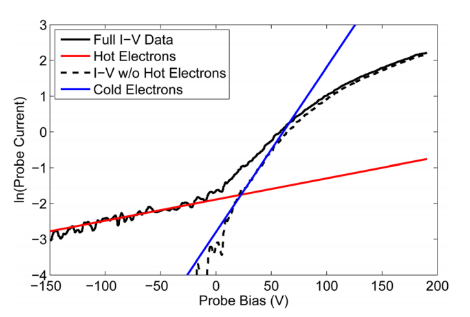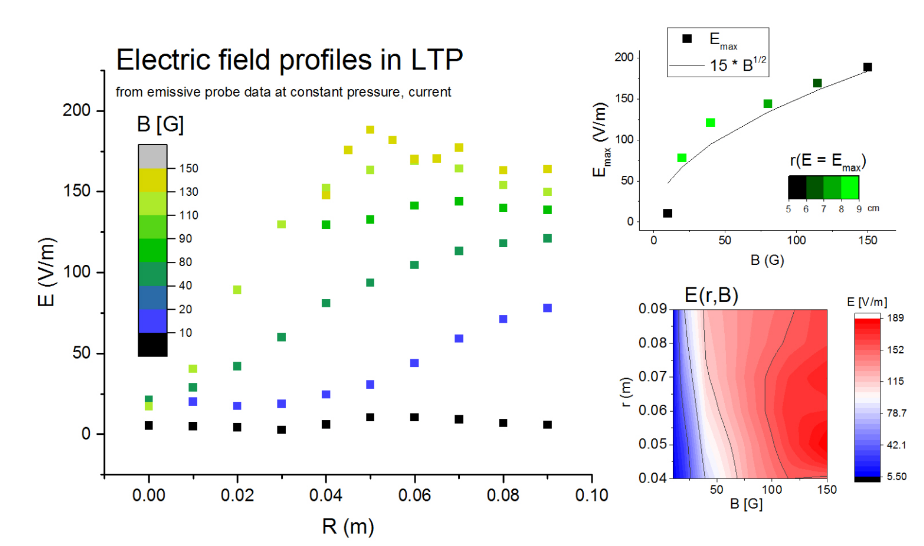Langmuir and Emissive Probes
Due to the plasma sheath formation, the potential at which Langmuir probes float is below the
plasma potential. By varying the bias that is applied to a probe, one can measure ion density,
electron temperature and plasma potential from the I-V characteristic. In order to get an accurate
measure of the plasma potential from a Langmuir probe, a large portion of the voltage range
must be swept over and the derivative of the I-V curve must be taken. This causes issues in
measuring potential fluctuations faster than a possible sweep time and in measuring the plasma
potential in real-time without post-processing of the data. Also, since a derivative is being taken,
noise in the data can be quite problematic and must be filtered out in such a way as to not
strongly affect the peak value in dI/dV which is often identified as the plasma potential.
One technique for overcoming these issues is the emissive probe. An emissive probe is heated to
a temperature such that it can begin thermionically emitting electrons into the plasma which is
equivalent to collecting additional ions, causing the probe to float at a higher voltage and closer
to the plasma potential.
 Semilog graph of an I-V curve with lines fit to the data for temperature determination.
Semilog graph of an I-V curve with lines fit to the data for temperature determination.
Pulsed heating is often used on the emissive probe to remove heating voltage offsets that occur
during constant DC heating. This feedback-controlled heating accounts for changing resistivity
of the hot wire vs. the cold wire, which requires fast samples (~10kHz) and real-time
calculations. When DC heating is used, the approximation that the floating point is at the
midpoint of the voltage of the two ends of the probe is often used. When heating voltages are
large (<10V), using this approximation is dubious and error could easily be a few Volts.
 Schematic diagram of the emissive probe design.
Schematic diagram of the emissive probe design.
The floating potential of a strongly emitting probe is about one electron temperature below the
plasma potential due to a virtual cathode that forms around the emitter from to the space charge
buildup of slow electrons emitted from the surface. This virtual cathode forms in order to reflect
some of the emitted electrons back to the emitter so that it collects zero net current.
 Electric field profile from emissive probes with constant pressure and current. Magnetic field changes magnitude and shape of E-field profile.
Electric field profile from emissive probes with constant pressure and current. Magnetic field changes magnitude and shape of E-field profile.
